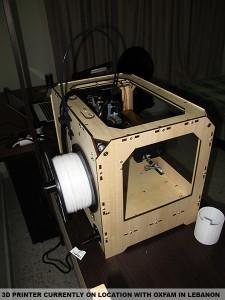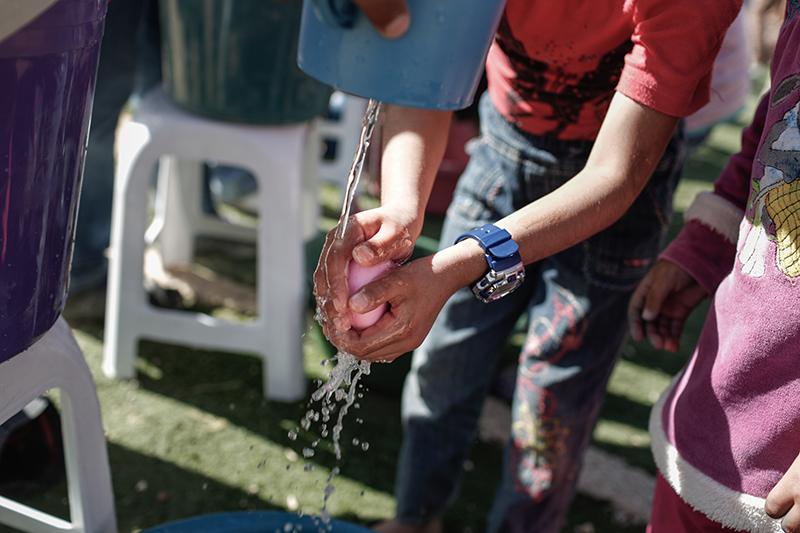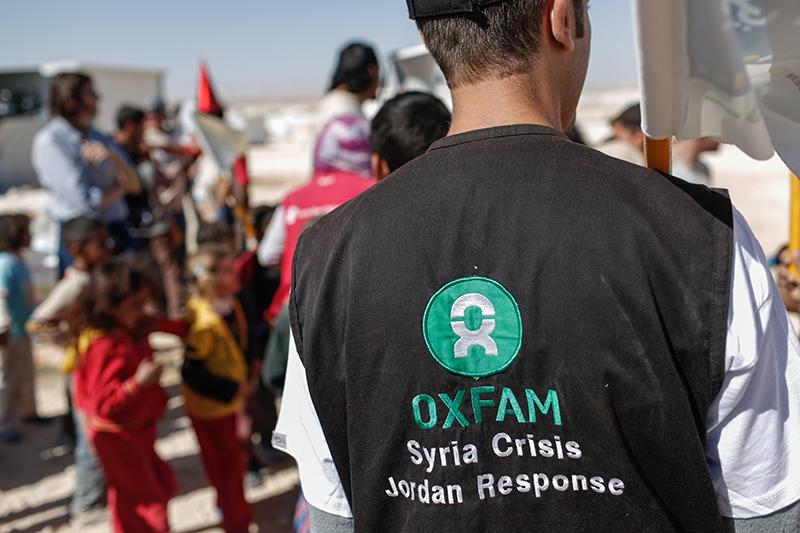 Over the past year or so, there have been a lot of people suggesting that one day we may use 3D printing in order to bring humanitarian aid to countries in need. It seems like a perfect solution. You simply bring 3D printers to the area in need, along with the raw material needed to print with, and then you can print out whatever you need. It’s been talked about a lot, but we haven’t really seen it implemented yet.
Over the past year or so, there have been a lot of people suggesting that one day we may use 3D printing in order to bring humanitarian aid to countries in need. It seems like a perfect solution. You simply bring 3D printers to the area in need, along with the raw material needed to print with, and then you can print out whatever you need. It’s been talked about a lot, but we haven’t really seen it implemented yet.
That is until Oxfam decided to team with MyMiniFactory.com to launch their latest project. Today, Oxfam has announced that they are teaming with MyMiniFactory in order to help with the rapid design, manufacturing and testing of items that will help to keep people healthy in areas that are suffering from a crisis. It’s not just these two companies that will be lending a hand via 3D design and 3D printing though. They are opening the program up to allow anyone to create designs and donate them to the cause.
“I believe that our partnership with MyMiniFactory, allowing people to ‘Donate by Design’, will be a great new way to allow people to use their skills to improve people’s lives,” explained Angus McBride, Emergency Sanitation Researcher, for Oxfam GB. “Using 3D printers for rapid prototyping allows us to work with affected people to trial many different designs and then quickly iterate and improve on the design to better meet their needs.”
The first humanitarian aid project will take place in Lebanon, supporting the Syrian refugees who have fled there. Currently there is quite a problem with the spread of infectious diseases, including many cases of diarrhea. With the help of 3D printing, and 3D design from people around the world, the two companies hope to solve the water hygiene issue.
“At the start of the year we were approached by Oxfam to advise on the potential of using 3D printers to deliver assistance in locations suffering a humanitarian emergency,” explained Nick Insall, Makers Exchange – Project Manager for MyMiniFactory. “Together we considered a range of possibilities and concluded that crowd sourced design combined with 3D printing prototypes in the field was the best way to start.”
The use of 3D printing will allow selected designs to be sent via email to humanitarian workers in Lebanon (and other crisis ridden locations). The designs will then be printed out, and tested. The workers will let the designers know what needs to be changed if anything, and a modified design will then be sent for reprinting. Once a specific design is shown to work, they will mass produce it using other manufacturing techniques.
The problem with the Syrian crisis, is that the current hand washing system is very poor, and it’s contributing to the spread of disease in the region. Because of this, participating designers are asked to design a solution that will save water and encourage better hygiene.
“According to a 2003 study by Curtis & Cairncross, simply washing hands with soap can reduce the risk of diarrhea by 47%, so if this process results in a new product which encourages people to wash their hands more, then it will result in a significant improvement in affected people’s health in emergencies,” said Angus McBride
Starting today and running until May 27th, 3D designers around the world will be able to download the project details and submit their own unique ‘Hand Washing Device’ designs for review. Engineers will be reviewing all the design entries, and identifying a short-list of variations to be tested in Lebanon. They hope to have a suitable solution ready for mass manufacturing by September 2014.
This is only the first project on the agenda for Oxfam and MyMiniFactory. There will surely be more to come in the future. Are you participating in this humanitarian aid project? Share your designs and discuss this project in the Oxfam / MyMiniFactory thread on 3DPB.com.
Subscribe to Our Email Newsletter
Stay up-to-date on all the latest news from the 3D printing industry and receive information and offers from third party vendors.
Print Services
Upload your 3D Models and get them printed quickly and efficiently.
You May Also Like
Heating Up: 3D Systems’ Scott Green Discusses 3D Printing’s Potential in the Data Center Industry
The relentless rise of NVIDIA, the steadily increasing pledges of major private and public investments in national infrastructure projects around the world, and the general cultural obsession with AI have...
3DPOD 260: John Hart on VulcanForms, MIT, Desktop Metal and More
John Hart is a Professor at MIT; he´s also the director of the Laboratory for Manufacturing and Productivity as well as the director of the Center for Advanced Production Technologies....
Etsy Design Rule Change Reduces Selection of 3D Printed Goods
Online marketplace Etsy has implemented a rule change requiring all 3D printed goods on the site to be original designs. The update to the site’s Creativity Standards states, ¨Items produced using...
E-Beam OEM Wayland Additive Partners with USC Racing to 3D Print Titanium Exhaust Collector
Every year, standards organization SAE International holds a competition called Formula SAE, in which students from both undergraduate and graduate programs design, build, and race small formula-style race cars. For...




































